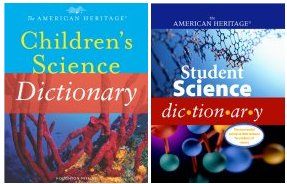Eat Out, Eat Smart Additional Information
To get nutrition information about healthy choices at many U.S. restaurant chains, go to healthydiningfinder.com/site/ (National Restaurant Association).
Information about food labels can be found at www.kidshealth.org/kid/stay_healthy/food/labels.html (KidsHealth for Kids).
You can find nutrition information at www.agr.state.nc.us/cyber/kidswrld/nutrition/index.htm (North Carolina Department of Agriculture & Consumer Services).
Additional information about campaigns to ban trans fats is available at www.bantransfats.com/ (BanTransFats.com). The New York City Department of Health and Mental Hygiene’s effort to phase out trans fats in restaurant is described at www.nyc.gov/html/doh/html/cardio/cardio-transfat.shtml.
Sohn, Emily. 2005. Food for life. Science News for Kids (April 20). Available at http://www.sciencenewsforkids.org/articles/20050420/Feature1.asp.
______. 2004. Packing fat. Science News for Kids (Oct. 27). Available at http://www.sciencenewsforkids.org/articles/20041027/Feature1.asp.
______. 2004. Moving good fats from fish to mice. Science News for Kids (March 10). Available at http://www.sciencenewsforkids.org/articles/20040310/Note3.asp.
______. 2004. Building a food pyramid. Science News for Kids (Feb. 18). Available at http://www.sciencenewsforkids.org/articles/20040218/Feature1.asp.
______. 2003. Turning to sweets, fats to calm the brain. Science News for Kids (Sept. 17). Available at http://www.sciencenewsforkids.org/articles/20030917/Note2.asp.
______. 2003. In search of the perfect french fry. Science News for Kids (July 23).
Available at http://www.sciencenewsforkids.org/articles/20030723/Feature1.asp.
Webb, Sarah. 2005. The color of health. Science News for Kids (March 2). Available at http://www.sciencenewsforkids.org/articles/20050302/Feature1.asp.
Books recommended by SearchIt!Science:
![[book]](https://www.sciencenewsforstudents.org/wp-content/uploads/2019/11/a1370_b1849.jpg) |
Chew On This: Everything You Don’t Want to Know About Fast Food
Published by Houghton Mifflin Co., 2006.
In this book, Schlosser, along with coauthor Charles Wilson, presents the fast-food industry to preteens, focusing on the aspects that will interest them most—the nonconformist teen entrepreneurs who founded the industry, the mistreatment of animals in slaughterhouses and of restaurant employees, the shocking effects that too much fast food can have on growing bodies, and the impact of the fast-food industry on schools, communities, and Earth. The authors explore the science and psychology behind the success of the fast- food industry. |
![[book]](https://www.sciencenewsforstudents.org/wp-content/uploads/2019/11/a1370_b2532.jpg) |
Health Science Projects About Nutrition
Published by Enslow Publishers, 2002.
All living things, including humans, need food to provide energy. What foods are the healthiest for our bodies? Can you test food for fats, carbohydrates, and proteins? How much does a human eat compared with a whale or a mouse? This book includes science projects, facts, and experiments that will help you answer these questions and many more about nutrition and food. |
![[book]](https://www.sciencenewsforstudents.org/wp-content/uploads/2019/11/a1370_b3990.jpg) |
Eat Smart: A Guide to Good Health for Kids
Published by New Wind Publishing, 1992.
James loves junk food. Before he knows it, he’s put on weight. Then, his mother introduces him to Joanna, a nutritional counselor, and he learns just how good healthy food can be. He adds exercise to his routine and gets his eating—and weight—under control. Cartoon drawings illustrate James’s introduction to good eating habits. A question-and-answer section and several vegetarian recipes are included. |
Power Words
calorie A unit used to measure the amount of energy released by food as it is digested in the body.
cholesterol A fatty substance that is produced by animals and plants and that is important for digestion and normal cell activity. Humans also get cholesterol from eating milk products and meat. Eating too many foods that have a lot of cholesterol may lead to heart disease.
fat An oily substance that is produced by plants and animals and that serves as a source of energy. In mammals, fat lying under the skin and around the organs prevents the loss of heat and provides protection. Fats are made mostly of fatty acids.
Copyright © 2002, 2003 Houghton-Mifflin Company. All rights reserved. Used with permission.
